Birds Of A Feather Flutter Together
17:21 minutes
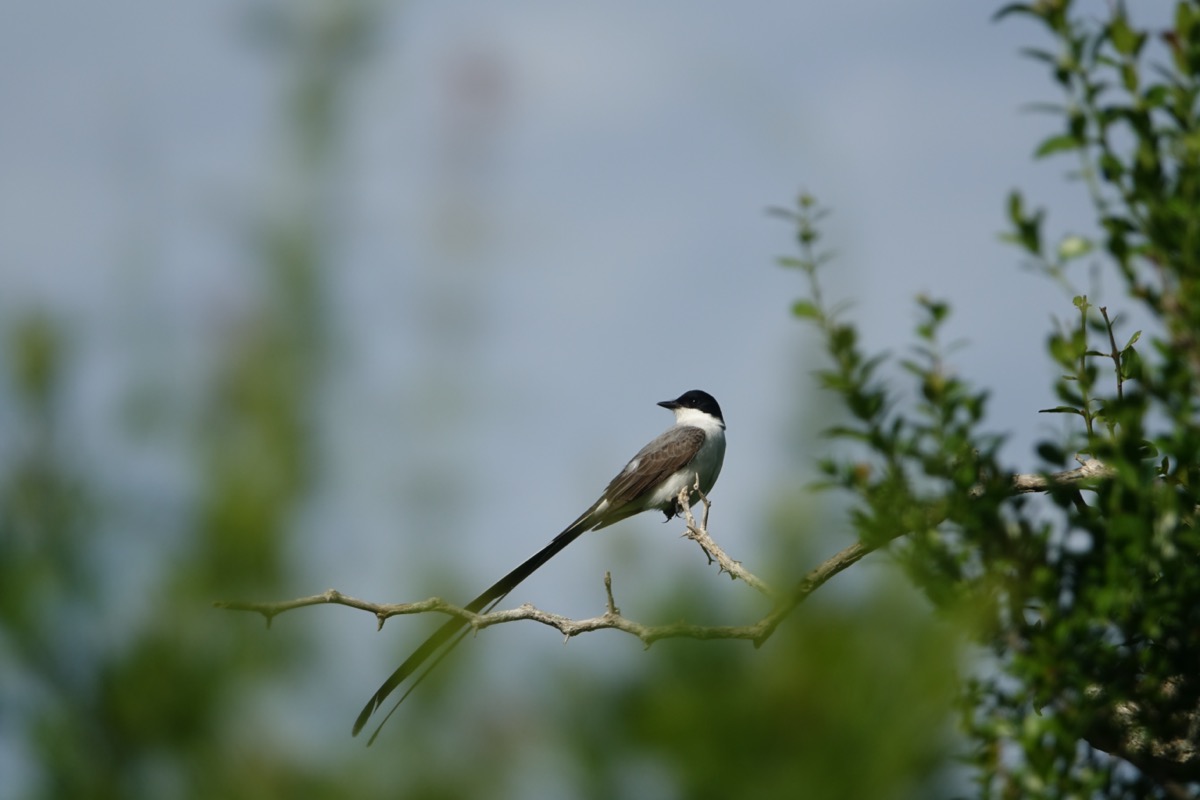
Bird feathers have many different functions. Softer down keeps a bird warm and stiffer wing feathers are used for flight. Feathers are also important in communication. Bright plumage can say ‘hey, look at me.’ And some birds even use the shape of their feathers as a communication tool—by using the sound their feathers make to relay messages. The results were published this week in the journal Integrative and Comparative Biology.
Biologists Valentina Gomez-Bahamón and Christopher Clark, both authors on that study, describe how birds might develop different wing-fluttering dialects, and how this could play a role in the evolution of bird species. Check out more sounds, videos and images from the research below!
All sounds © Valentina Gómez-Bahamón, Field Museum
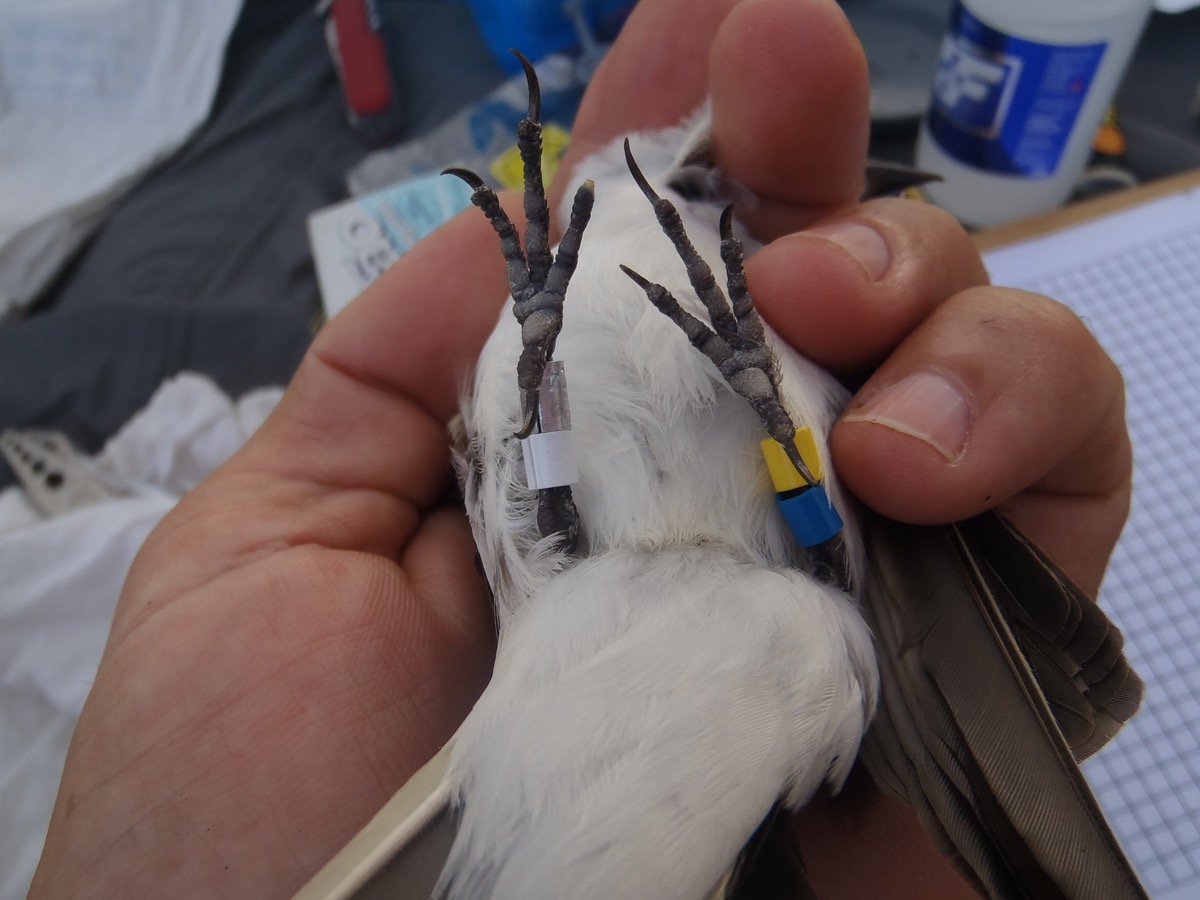
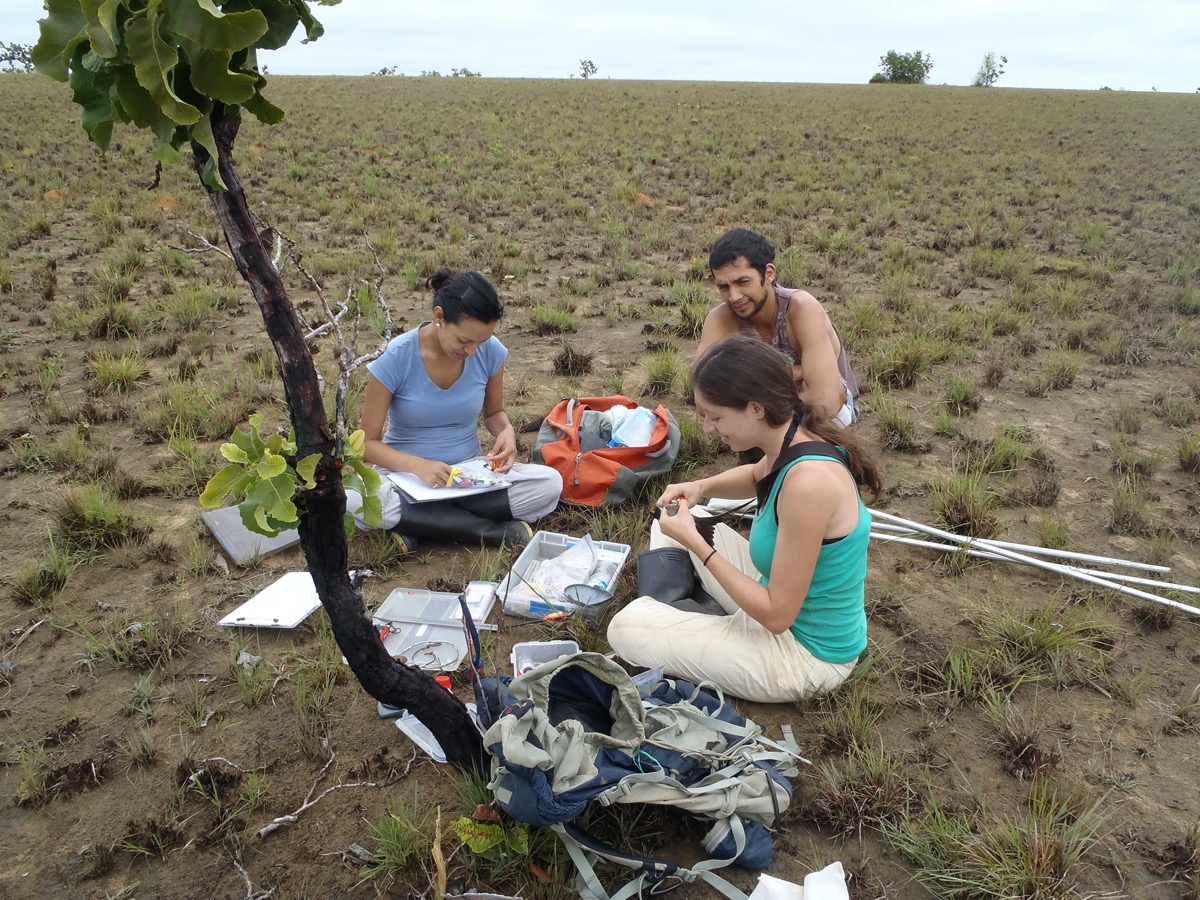
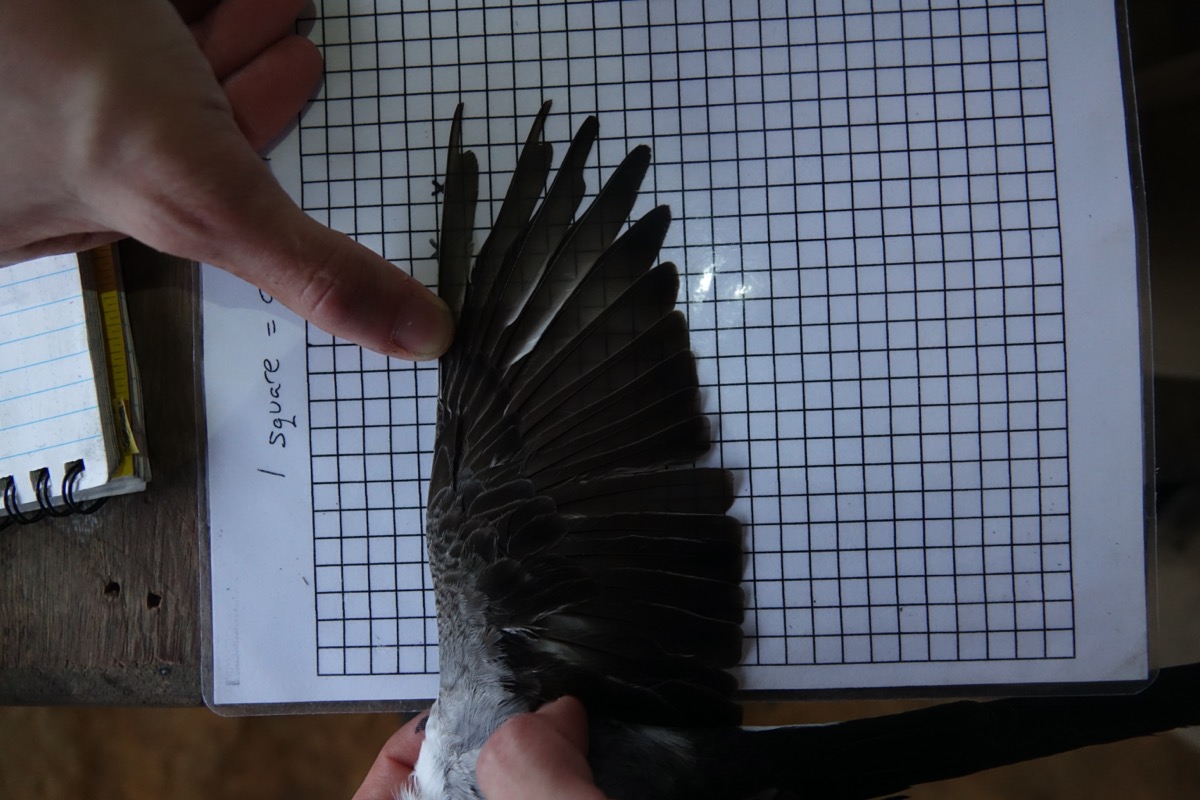
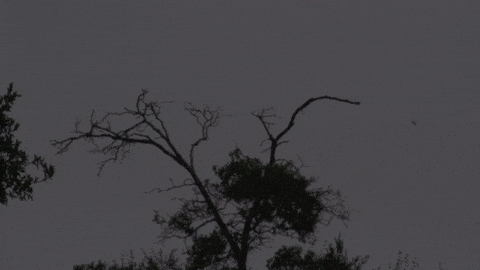
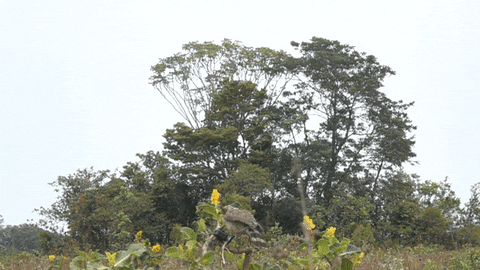
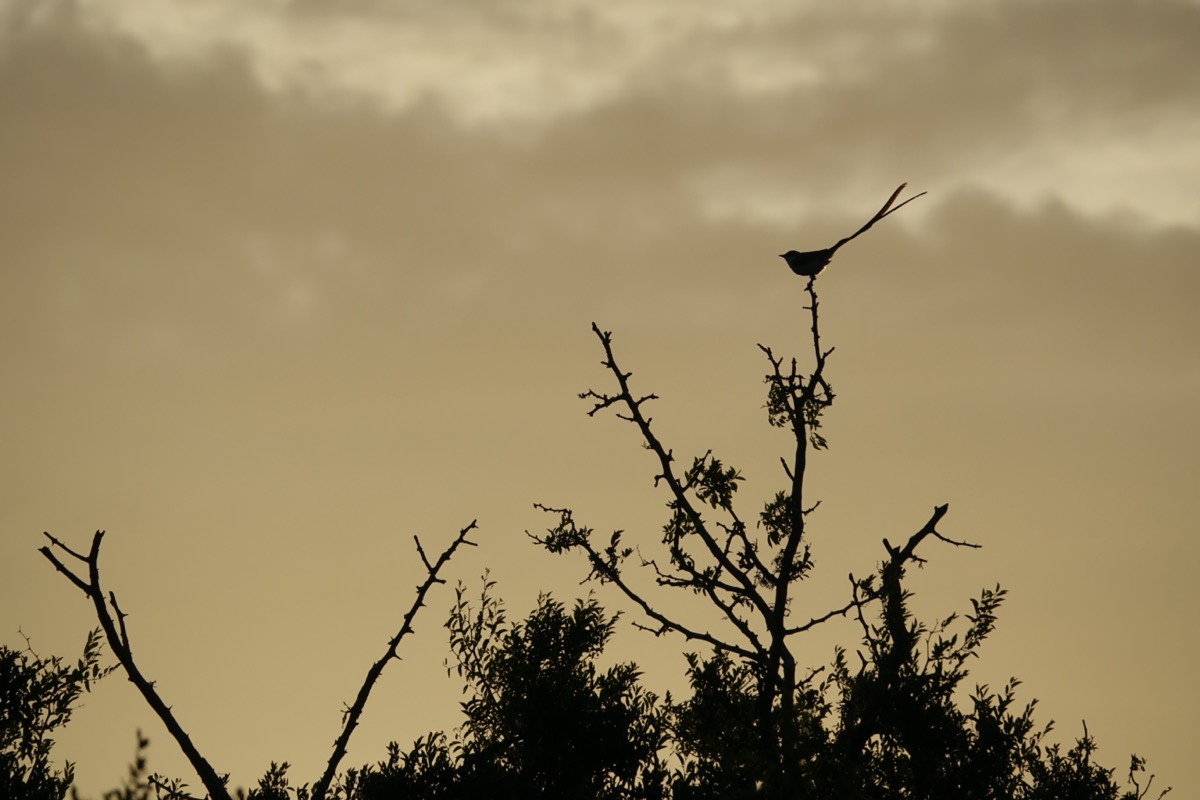
Invest in quality science journalism by making a donation to Science Friday.
Valentina Gomez-Bahamón is a scientific affiliate at the Field Museum of Natural History and a PhD student in Biology at the University of Illinois at Chicago in Chicago, Illinois.
Christopher Clark is an assistant professor of Biology at the University of California, Riverside in Riverside, California.
IRA FLATOW: This is Science Friday. I’m Ira Flatow. A little heads up for you bird nerds– the shortened daylight hours and drop in temperatures are all signs of fall bird migration, so now is the time for you to spot hundreds of species flying overhead.
And scientists estimate there are about 10,000 species of birds, but have you ever wondered what evolutionary processes led to the diversity in birds? Details in bird feathers are providing clues to the answer. Producer Alexa Lim is on the case.
ALEXA LIM: Bird feathers have many different functions. There’s the basics– softer down keeps the bird warm, and stiffer wing feathers are used for flight. And feathers are also important in communication. Bright plumage can say, hey, look at me. In some birds, they even use the shape of their feathers as a communication tool by using the sounds their feathers make to relay messages.
A team of scientists wanted to investigate how birds might develop different wing-fluttering dialects, and how this could play a role in the evolution of bird species. Their results were published this week in the journal Integrative and Comparative Biology.
My next guests are both authors on that study. Valentina Gómez-Bahamón is a PhD student in biology at the University of Illinois at Chicago and a scientific affiliate at the Field Museum of Natural History. Christopher Clark is an assistant professor in biology at the University of California, Riverside. Welcome.
Christopher Clark: Thank you. Pleasure to be here.
VALENTINA GÓMEZ-BAHAMÓN: Thank you. Thanks for inviting me and for your interest in our research.
ALEXA LIM: Sure. OK, so Valentina I wanted to start with you. In the study, you looked at a bird called the Fork-tailed Flycatcher. What got you interested in this particular bird?
VALENTINA GÓMEZ-BAHAMÓN: Yeah, so it’s a common bird in my home country, which is Colombia, especially in the llanos, which are flatlands towards the eastern side of Colombia. In these areas, there are times of the year where there are a lot of these birds– so clouds of Fork-tailed Flycatchers moving around– and then they leave and some remain. But it made me wonder, why are some leaving, and why are some that stay here?
ALEXA LIM: Right. Yeah, and based on its name, it has a pretty distinctive tail. What does it look like?
VALENTINA GÓMEZ-BAHAMÓN: Yeah, it’s a beautiful long tail that looks like a scissor. In Spanish, people call them tijeretas because that’s the name for scissor, and I guess it’s very descriptive of how they look like. And they also are very acrobatic. So you see the tail sometimes opening sort of like a fan when they’re catching insects. And they also fight with each other, so you can see them doing this, flying almost upside down and turning around. And so those flights are very interesting and beautiful.
ALEXA LIM: OK. So there’s two subspecies of this Flycatcher that you talked about– one migrates and one doesn’t migrate. So what question were you trying to answer in this study about that?
VALENTINA GÓMEZ-BAHAMÓN: Yeah, so there are actually four, but in this place where they coexist, when you can see them together, there’s only these two subspecies. They look very similar, and the main difference that they have morphologically that you can distinguish when you have the two birds in your hand is the shape of the primary feathers.
And the question that I had was, well, first, do they produce non-vocal sounds with their wing feathers? And then, do they differ? Because we know what the shape is different, and this is only found in males. So because it’s only found in males, one question was, if they produce sound is it something that is produced during a particular behavior? Or is it just something that sounds because of the bird flying anytime?
ALEXA LIM: Right. And Chris, since you are a feather expert, can you take us through some feather physics 101? How does a bird feather make sound?
CHRISTOPHER CLARK: Oh, there’s a bunch of different ways that feathers can make sound. One of the mechanisms that’s really common is that the feather flutters, and it flutters at a stable frequency and gives off total sound.
And so it’s like a guitar string. When you have a guitar string and you pluck it, it vibrates at its resonant frequency. So when a feather flutters, it’s fairly similar to that. What happens is the air flows over the feather and it provides aerodynamic energy, and then the feather starts to oscillate at a stable frequency set by its mass and stiffness.
One difference between feathers and a guitar string is that a guitar string is basically a one dimensional object, and so it has one primary resonance frequency that it will vibrate at. Feathers are flat. They’re basically two dimensional, but by having an additional dimension that means there’s many different ways that they can flutter.
So one particular feather might have two or three, or even sometimes more than that, different modes of vibration that it can express. And so what happens is that when a bird is flapping its wings– or in the case of some birds like snipes or hummingbirds, when a bird dives and spreads its tail feathers– by putting its feather out in the airflow while the air is going over it pretty fast, that’s what activates the feather and enables it to vibrate at the stable frequency and make total sound.
ALEXA LIM: Wow, are there certain spots or structures on a feather that are key for sound-making?
CHRISTOPHER CLARK: Usually, yes. The basic one is that the feather often has a modified shape. So, for example in the feathers that Valentina studied, the outer wing feathers of the Flycatcher, there’s kind of a notch– maybe a centimeter or centimeter and a half down from the tip of the feather– and everything distal to that notch, everything outside that notch, the feather is a little bit narrower than it would be otherwise.
What that notch does, is it separates the feather from its neighboring feathers, so that means the feather is not overlapping with the neighbor and it could flutter in that notched region.
And then the other thing that often happens is that birds that make sounds by having their feathers flutter is that the feathers also change in stiffness. But the stiffness differences are often really subtle and it’s in the microstructure, so it’s really hard to see.
ALEXA LIM: Right. And Valentina, how did you see that the Flycatchers were making these feather sounds? What context did you observe that they were using their feathers to make different sounds?
VALENTINA GÓMEZ-BAHAMÓN: Yeah, so one was in the morning. These are some of the birds that wake up earlier in our study sites and they start singing. And then I started hearing their normal song. And then I realized that at a certain point they would stop singing and then fly from a perch to another perch. And they would do a little sound that sounded like a song, drrrr, and it was very clear, at least in the non-migrants.
And then also when they were fighting. So when they’re fighting, they just do a lot of different displays. They show their crowns. They open their tails. They fly at each other. They call. They sing. And also, they produce the feather sound.
And, qualitatively, I knew it was the feather’s sound because I have been following these birds for many years, and I started to get to know them. So then we had to actually make sure that the sound that’s being produced is not vocal, but something that coincides with the motion of the bird flying.
ALEXA LIM: Right. OK. So they were making these feather sounds while they were fighting and also for mating displays as well?
VALENTINA GÓMEZ-BAHAMÓN: No, I was going to say– so in this case, it’s interesting because they are socially monogamous. So I think it’s not necessarily a mating display, but more of a pair-bonding display because they produce the sound every morning during, yes, the breeding season, but they already have their nest and their young, so it might be also a pair-bonding display.
ALEXA LIM: So you recorded the sound of these two different subspecies of this Flycatcher bird– one that migrates and one that doesn’t migrate. I want to play a couple of these clips so we can get an idea of how different their bird flaps sound. So this is the first clip from the non-migrating species of the Flycatcher.
[GENTLE FLAPPING]
OK. I want to play that one more time.
[GENTLE FLAPPING]
Now, the second clip is from the migrating species of Flycatcher.
[ABRUPT SQUEAK AND BUZZ]
OK. Let’s hear that one again.
[ABRUPT SQUEAK AND BUZZ]
This first clip is the one labeled “monachus liberacion,” and the second clip is “savana liberacion.” You can tell they do sound different.
VALENTINA GÓMEZ-BAHAMÓN: So monachus has one feather that is less notched than savana. Savana has three notched feathers.
And then something that we also noticed on this study is that overall feather shape also differs between migrants and non-migrants. So migrant feathers are longer and narrower. They’re thinner, whereas the non-migrants have wider feathers and then they’re shorter. And that potentially affects the part of the feather that vibrates.
ALEXA LIM: Right. Yeah, and can you talk about this a little bit more? These feathers are definitely making a sound, but how do you know that the birds are using this for communication rather than just a byproduct. Humans clear their throats, but that’s not necessarily communicating anything.
CHRISTOPHER CLARK: Yeah. This type of sound evolves into communication sounds from incidental byproducts. So I like your throat clearing example, or another one that I use a lot is footsteps in humans.
When you walk down a hall and you make footsteps, most of the time your footsteps it’s not intentional. You’re not doing it to communicate with other people. It’s simply a byproduct of walking. And if somebody else happens to hear you they can still know that you’re there, but it’s not necessarily for alerting them.
But in people all the time, we modify our footsteps. You might wear loud shoes, or you might tiptoe. And when you do either of those things, you’re then intentionally modifying how much sound you produce in order to try to affect whether or not other people detect you. And so wearing loud shoes and walking down a hallway in loud shoes that arguably is a signal.
And so a lot of the time when a bird evolves an originally incidental byproduct locomotion and turns it into a communication sound, what they usually do is they usually evolve an instrument. They evolve part of their feathers to actually be different in shape, and that difference in shape is tied to the sounds they make.
So that’s what Valentina has with these notched feathers and the outer tips of the wings. It’s that the shape of the notch is unusual and distinctive, and in most cases, when birds have a notch like this in their wing feathers, they are then making relatively loud sounds with their feathers during a specific display. But it is the case that sometimes birds will make these types of sounds and there are no modifications.
So in humans, we clap our hands to applause. This is a type of non-vocal communication that we do all the time, and we don’t have any special modifications to our hands for making applause. It’s simply something that we do behaviorally.
ALEXA LIM: Right. Yeah, so is it that their sounds are different in, like you said, that they use them in these different contexts. So then how does this push birds to speciate or become different species? Could they’ve actually become unintelligible to each other?
VALENTINA GÓMEZ-BAHAMÓN: Yes, there are different ways in which animals and, in this case, birds can be isolated in terms of reproduction. And so the first one is breeding in different places. And these birds also have shifted breeding seasons or schedules so they don’t coincide at the same time.
The migrants, for instance, need to breed, they need to migrate, and they need to molt. And those three things don’t happen at the same time, generally, because it’s very energetically costly. So that’s another way they’re isolated.
Then the other thing is they do differ also in tail length. So the tail of a migrant is shorter and, in part, because it has to fly really long distances efficiently. And we know that the tail is also used in this place.
And we know that the birds are together at some point of their life. So the question is, is there chances in which they recognize each other as different things or prefer each other as different things? Or do they actually mix?
And so we know they don’t, because we have data from their genes. But it could be that, in part, it’s because they are understanding each other as different things. So there’s not only mate choice associated to this sound, but there is a preference to their own particular sound. We don’t know that, but that would actually be a way in which we know that speciation is reinforced.
But from all this evidence, I think they are different species. It would be great to know how much this pre-mating isolation, which is the different sounds, actually influences their identity– if it’s really something they discriminate or if it’s just a byproduct that really doesn’t make too much a difference– just because there’s these other reasons why they don’t breed.
ALEXA LIM: I’m Alexa Lim, and this is Science Friday from WNYC Studios. Yeah that’s interesting. So then how would you sum up how– what does this tell us about speciation or evolution, this study.
VALENTINA GÓMEZ-BAHAMÓN: So for me what’s interesting is that we know there is a difference in ecology. Migrating and non-migrating are very two different strategies. And so being different strategies, that affects how many eggs they lay. It affects their morphology, of course, because there’s so much associated with flight, their schedules, how much they’re going to eat, when they molt. All these different things, these adaptations and being in different environments and facing different situations, cascades many different changes associated to that behavior.
And those changes pushes the two lineages, or these two groups, into different morphological trajectories. And because these communication signals are influenced by morphology, because it’s the shape of the feather that influences how they’re going to sound. Then having that difference in morphological evolution may reinforce or just bring more correlated differences that make these things different species– if that makes sense.
That’s what I think is interesting. And the things that will affect how the bird communicates is the environment in which it’s communicating. Because the properties may be different of how the sound is moving in tropical versus non-tropical areas, or the light, for instance, when we’re talking about pretty much coloration or visual signals, and also the morphology associated to the birds’ life work or ecology.
ALEXA LIM: Right. Yeah, that’s amazing. Yeah, when you look at a bird or you think about evolution, you look at these big characteristics you can see, but this study shows that it’s so much more fine-tuned. Valentina, you said there’s so many cascading traits and effects that are going on that we can’t see. But they’re there, and you captured them.
VALENTINA GÓMEZ-BAHAMÓN: Yeah, and also because birds perceive the world differently. So we have to find a way in which we understand what they’re seeing. They see more frames per second than we do. They see more colors than we do. And they probably hear differently than how we hear.
So it’s important to have that in mind and also to not think that a display’s only one channel of communication, but that the birds are also moving while they’re doing it. And just like in us while we’re talking, we’re also moving and saying things with our hands or gestures. That may also be important in bird communication.
ALEXA LIM: Right. So the world is a little noisier and more colorful than maybe humans can catch on to.
VALENTINA GÓMEZ-BAHAMÓN: Yeah.
ALEXA LIM: Thanks so much for joining us. Valentina Gómez-Bahamón is a PhD student in biology at the University of Illinois at Chicago and a scientific affiliate at the Field Museum of Natural History. And Christopher Clark is an assistant professor in biology at the University of California, Riverside. Thanks so much.
CHRISTOPHER CLARK: Our pleasure. Thank you.
VALENTINA GÓMEZ-BAHAMÓN: Thank you.
ALEXA LIM: For Science Friday, I’m Alexa Lim.
Copyright © 2020 Science Friday Initiative. All rights reserved. Science Friday transcripts are produced on a tight deadline by 3Play Media. Fidelity to the original aired/published audio or video file might vary, and text might be updated or amended in the future. For the authoritative record of Science Friday’s programming, please visit the original aired/published recording. For terms of use and more information, visit our policies pages at http://www.sciencefriday.com/about/policies/
Alexa Lim was a senior producer for Science Friday. Her favorite stories involve space, sound, and strange animal discoveries.